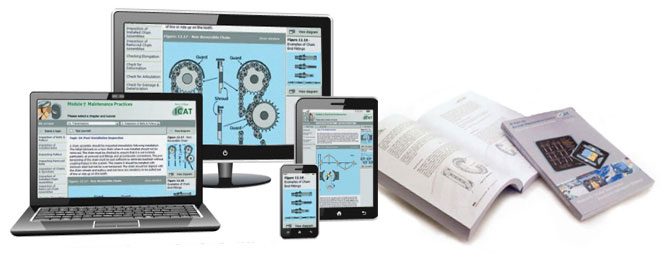
EASA Part-66 Cat A Package
We provide aircraft maintenance training schools with this fantastic category A package made up of fully comprehensive study material for all the modules listed below. The material can be supplied as high quality printed books, or in electronic form which can run on any device (tablet, smartphone or any computer).
Expand each of the Cat A modules below for more information:
Within a maintenance environment it is essential that human factors are taken into account. By understanding human performance limitations, social psychology, communication and the factors affecting performance we can minimise the likelihood of incidents attributable to human human error.
This extensive module builds upon the knowledge from earlier modules and provides explanations of fixed-wing aerodynamics and all the main systems found in modern civil aircraft: airframe, air conditioning, cabin pressurisation, instruments, electrical power, equipment & furnishings, fire protection, flight controls, fuel systems, hydraulic power, ice & rain protection, landing gear, lights, oxygen, pneumatics, water & waste, onboard maintenance systems, integrated modular avionics (IMA), cabin systems and information systems.
Note that there are two versions of this module available:
- 11A is tailored for aircraft powered by turbine engines (applicable for those studying towards A1 or B1.1 licences).
- 11B is tailored for piston engine aircraft (applicable for those studying towards A2 or B1.2 licences).
Why Not Combine the Study Material with CBT?

EASA Part-66 Cat A Package + CBT
Why not support the study material with highly interactive classroom trainers and other CBT?
Whilst the study material fully covers all the knowledge requirements your instructors and students will ever need, the CBT enhances the classroom experience and increases students' understanding of some of the more challenging subjects.